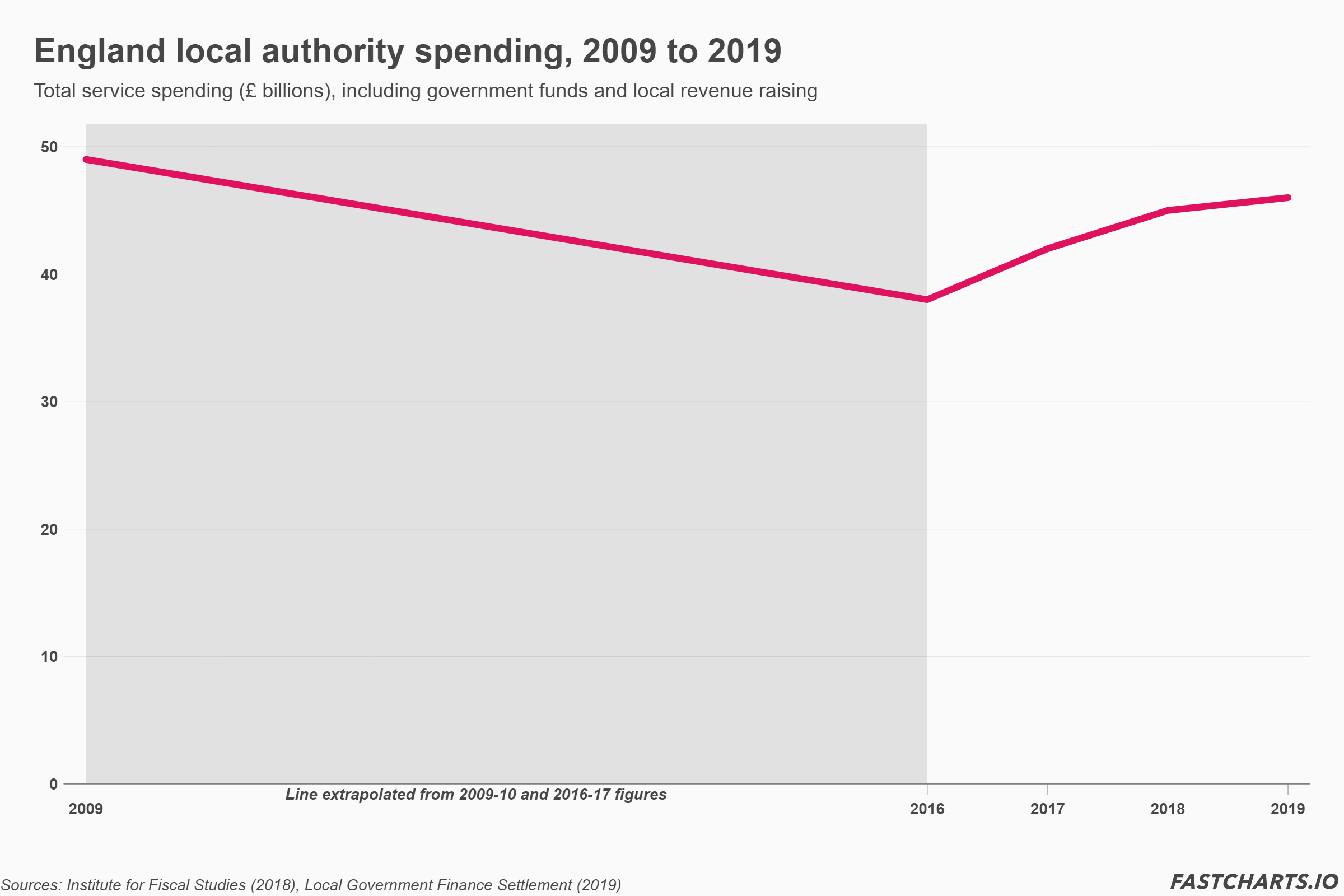On Monday, the government launched a brand-new “Stronger Towns Fund” — £1.6 billion to be spent in parts of England that have not “shared the proceeds of growth”.
It’s already been dubbed a “bribe” to help Theresa May win the support she needs from MPs in the north and the midlands to get her beleaguered Brexit deal over the line.
The policy commits extra cash for councils over the next seven years. But will it be enough to make up for nine years of austerity? Let’s take a look at the figures.
The North West and West Midlands are the biggest Stronger Towns Fund recipients
The government have allocated a combined £1 billion to regions of England on what they call a “needs-based formula”.
The North West and the West Midlands are the biggest recipients, securing £281 million and £212 million respectively.

Councils can also bid for a slice of the remaining £600 million. A government spokesperson confirmed to FactCheck that the cash will be spent over the next seven years, ending in 2026.
London is not getting any of the initial £1 billion, but towns within Greater London will be eligible to take part in the bidding.
The Stronger Towns Fund represents a tenth of what councils lost from central government under austerity
According to the latest estimates from the Local Government Association, councils have lost £15 billion in central government funding between 2010 and 2020.
That’s nearly ten times the amount pledged in the Stronger Towns Fund to be spent over the next seven years.

Total spending by councils is rising but has to yet to recover to pre-austerity levels
Local authorities get some of their cash from central government grants, and the rest from council tax revenues.
Taking both of these elements into account gives us “total service spending” — which fell from £49.5 billion in 2009-10 to £38 billion in 2016-17, according to the independent Institute for Fiscal Studies.
That’s a real-terms drop of over £11 billion.

Since then, service spending has slowly crept up, thanks to changes that give councils more powers to raise local taxes and a cash boost at last year’s Autumn Budget. Local authorities in England now have a combined budget of £46.4 billion for 2019-20.
But that’s still just shy of what it was pre-austerity.
Every region of England saw combined council budgets cut by at least 15 per cent between 2010 and 2017
Every English region saw a real-terms cut in total council spending between 2009-10 and 2016-17.
Here’s how many billions were lost by councils, broken down by region, in that time.

London took the biggest hit, losing over a third (£3.6 billion) of its budget, followed closely by the North East. The South East saw the smallest relative losses of “just” 16 per cent.
Here are the cuts expressed as a percentage of councils’ pre-austerity budgets.

Councils in England faced a 50 per cent real-terms cut in government funding between 2010 and 2017
… and even with extra powers to raise council tax revenue, local authorities saw their total budgets slashed by nearly a third in that time.
Here’s a graph from the National Audit Office (NAO), which shows the decline in government funding for local authorities since 2010-11.
We should say, though, that the NAO projections for 2019-20 will now be out of date as they were made on the basis of 2018 policy, which has since changed.

What have the government said?
Announcing the policy, communities secretary James Brokenshire said “We have listened to people who are concerned by momentous changes to their communities and I am determined to provide the support they need to create a more prosperous future beyond Brexit.”



